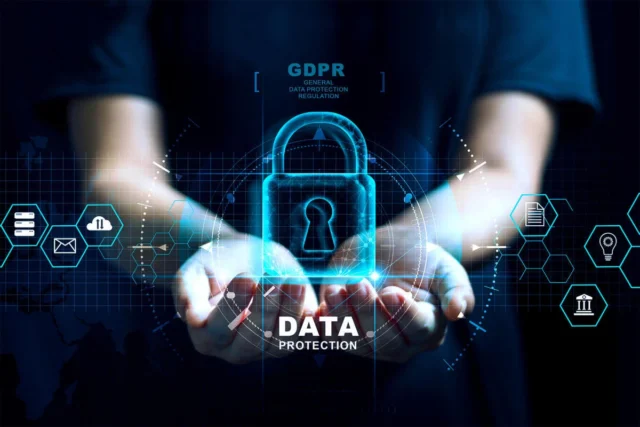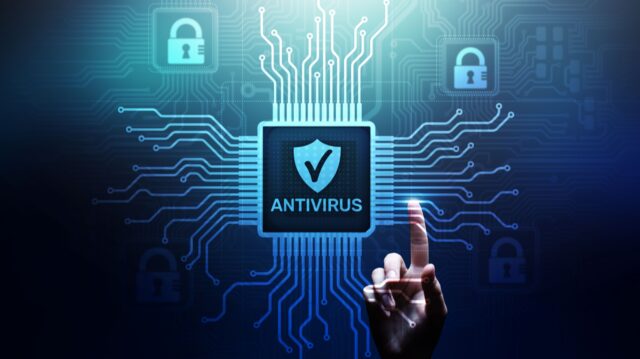
The IT landscape is constantly evolving, so the technologies and approaches for secure IT management must also adapt. While many technologies are available to help manage IT security, some are more effective than others. In this article, we will explore some key technologies for secure IT management that are currently in use or under development.
Firewall
A firewall is a security measure that you can use to protect a network or individual computer from unauthorized access. Firewalls can be hardware- or software-based and are often used with other security measures, such as antivirus software and password protection. Firewalls can help protect a network by blocking unsolicited or unauthorized access from the internet, other networks, or users on the network. They can also protect individual computers by blocking access to unauthorized applications and files.
Firewalls are essential tools for secure IT management because they can help protect a network from attacks, viruses, and other security threats. By preventing unauthorized access to a network and its resources, firewalls can help protect the data and information of users on the network. Firewalls can also help protect a computer from unauthorized access by preventing unauthorized users from accessing files and applications. By blocking access to unauthorized applications, firewalls can help protect a computer from viruses and other types of malware.
Data Loss Prevention

As organizations increasingly rely on digital data, data loss prevention has become a key technology for secure IT management. Data loss prevention (DLP) is used in the information security industry to describe systems that identify, monitor, and protect data to prevent unauthorized use, disclosure, or alteration. DLP aims to reduce the risk of data loss by detecting and stopping incidents before they happen, rather than reacting after the fact.
Organizations can identify and prevent data losses and ensure that sensitive information remains safe and secure. You can also use DLP to maintain compliance with data privacy laws. There are many different types of data loss prevention solutions. One of the most common DLP technologies includes data capture. This approach captures all incoming and outgoing data traffic on a network and then analyzes it for sensitive information. You can use Data capture to detect and prevent data leaks.
Intrusion Detection System
An intrusion detection system (IDS) is a network security technology that monitors network traffic for malicious activity or policy violations and generates alerts when such activity or violations are detected. IDSs are commonly used in organizations to detect malicious activity such as unauthorized access attempts, data theft, and Cross-Site Scripting (XSS) attacks. IDSs can also monitor traffic for policy violations such as unauthorized access to sensitive files or inappropriate use of network resources.
IDSs can be used in both networked and standalone environments. Networked IDSs are installed on the network perimeter, while standalone IDSs can be located on a dedicated server or workstation. IDSs can be deployed in various ways, including as part of a network intrusion detection system (NIDS), host-based intrusion prevention system (HIPPS), or application layer gateway. IDSs can also be deployed on the perimeter of a network, in front of firewalls, or inside networks.
Intrusion Prevention System

An intrusion prevention system (IPS) is a security technology that monitors the network and system activities for malicious or unwanted behavior and can respond in real-time to block or contain such activity. IPSs are typically deployed at the network perimeter to protect against unauthorized entry or intrusion by malicious actors. An IPS can monitor and report on activity across the entire network, including internal systems, in an enterprise setting.
IPSs are essential to a secure IT management strategy because they can help prevent malicious actors from infiltrating systems and carrying out attacks. By identifying and blocking malicious activity before it can cause damage, an IPS can help protect your organization’s data and systems.
An IPS should be deployed with other security measures, such as firewalls and intrusion detection systems (IDSs). Together, these technologies can help protect your network from attacks that might otherwise be successful. A business should also configure an IPS to monitor various system and network activities, including traffic data, user behavior, and system logs. By monitoring these types of data, an IPS can identify signs of malicious activity before it has a chance to occur.
Security Incident and Event Management
Security Incident and Event Management (SIEM) is a crucial technology for secure IT management. It provides the ability to detect, investigate, and respond to security incidents and events promptly and effectively. SIEM can help identify and prevent malicious activity, protect data integrity, and ensure timely response to regulatory requirements. By automating the process of detecting, investigating, and responding to security incidents, SIEM can help ensure that your organization’s security infrastructure is robust and able to meet the demands of today’s threat landscape.
In addition to securing IT infrastructure, you can use SIEM to identify and prevent systemic issues. By tracking all security events, SIEM can help you detect potential issues early and take appropriate action. This can ensure that your organization remains compliant with regulations and avoid costly outages.
If you want to secure your IT infrastructure and prevent malicious activity, consider investing in a SIEM solution. It will help ensure that your organization can meet the demands of today’s Threat landscape and stay compliant with regulatory requirements.
Antivirus

Antivirus is a type of software that is designed to protect computers from malware, including viruses, worms, and Trojan horses. Antivirus software is available for both Windows and Mac computers and can be downloaded from the computer manufacturer or online. Antivirus software is typically installed on a user’s computer as part of the operating system and automatically scans all files loaded onto the computer for viruses.
Antivirus software is an integral part of secure IT management because it can help to protect users’ computers from malware infection. By automatically scanning all files loaded onto a computer, antivirus software can help prevent the spread of viruses and other malware. Additionally, antivirus software can help identify and remove viruses detected on a computer.
Antivirus software is also essential for protecting users’ data. By automatically scanning all files loaded onto a computer, antivirus software can help identify and remove any viruses detected on a computer. Additionally, antivirus software can help to protect users’ data from being stolen or corrupted by malware.
IT Monitoring
IT monitoring is a crucial technology for secure IT management because it helps organizations identify and resolve potential security issues before they can cause harm. By monitoring network activity, administrators can detect unusual or unauthorized activity, and by monitoring system logs, they can determine the source of any problems.
In addition, IT monitors can provide real-time alerts when sensitive data is compromised, or systems are about to fail. By quickly taking corrective action, IT monitoring can prevent significant security breaches from occurring.IT monitoring also plays a vital role in compliance with federal and state regulations. By tracking system activity and identifying potential violations, IT monitors can help ensure that systems comply with applicable laws and regulations.
In addition, effective IT monitoring can help organizations improve data security by identifying weaknesses before they become exploited. Finally, effective IT monitoring can help organizations maintain high efficiency and productivity by detecting problems early and resolving them in real-time.
In conclusion, secure IT management requires a combination of technical and non-technical controls. Organizations can create a secure IT environment that protects their data and assets using various vital technologies, or they can hire a co-managed IT service provider like MyTek.
Secure IT management is an essential part of any organization’s overall information security strategy and should be implemented in a coordinated manner to ensure optimal protection. Contact us today for more information about critical technologies for secure IT management and their benefits for your business.



